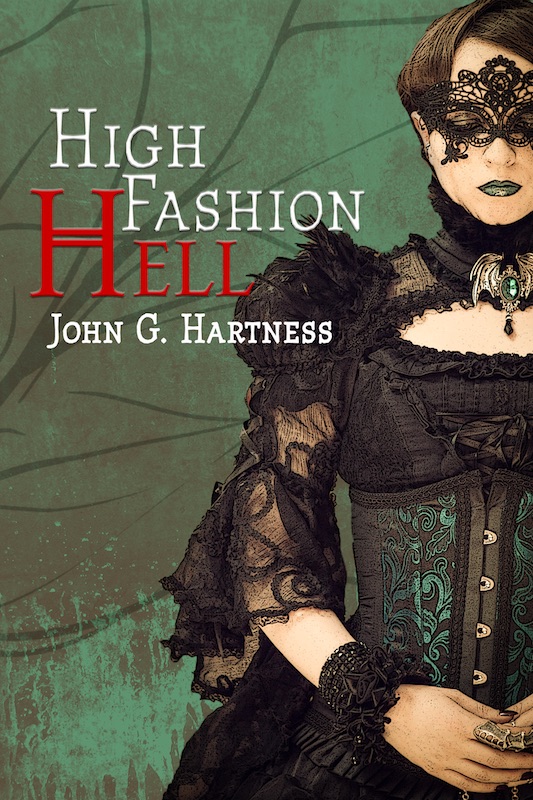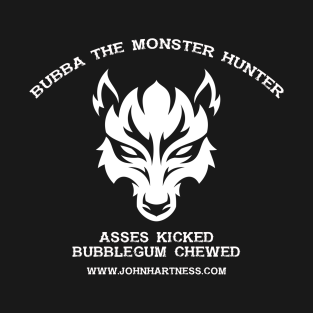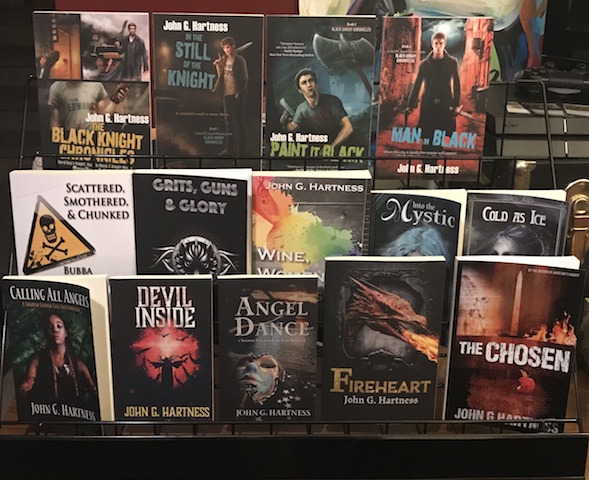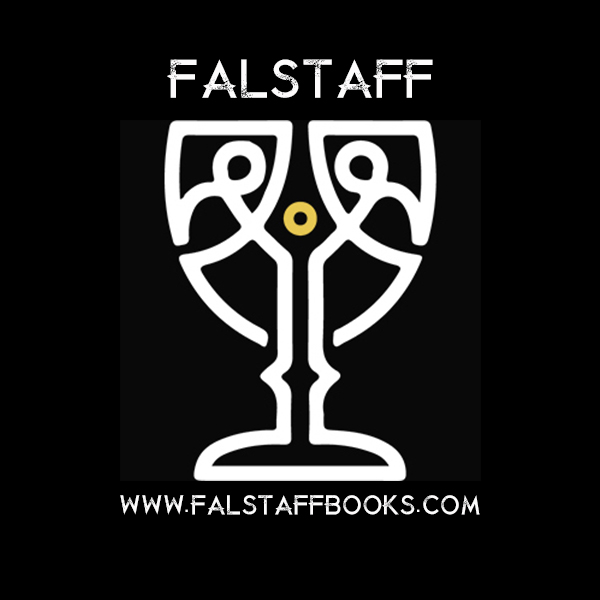
by john | Aug 1, 2017 | Business of publishing, How to Sell Books, Promos/Giveaways
So, we all know that reviews are critical to a book’s success. The more reviews a book gets, the more action there is on the book’s Amazon Page, and the higher it appears in Amazon’s mysterious “search algorithms.” The rumor is that 20 reviews is a benchmark, and that after 20 reviews, the book gets a bump in discoverability in the Amazon search engine. The rumor continues that you get another bump at 50, and another bump at 100. I have no idea if this is true, because I don’t program search engines for Amazon’s site, and the people that do aren’t talking. So anything anyone says (unless they can specifically tell you “I worked for Amazon and know this to be true”) is pure speculation. And even if they worked there, if they left more than six months ago, it’s probably speculation.
But anyway, reviews are important to a book’s success, regardless of whether or not they affect the ranking in the Amazon’s searches. Reviews from consumers are more and more how people make decisions in purchasing items. With so many things out there, and so little time to fuck around with figuring out what the best fit for you will be, user reviews of everything from washing machines to books are critical. Word of mouth is still the best way to sell a book, period.
So how do you get reviews? Especially if you’re self-publishing or working with a small press, it can be tough. Your marketing budget may be small or non-existent, and you may not have enough name recognition to get people excited to read your book when it first comes out. So what are you going to do?
1) Build an engaged and excited fan base – This isn’t easy, and it isn’t quick. But it is the best way to get a bunch of reviews on your books. You need to find your fans, and you need to tell them how important reviews are. Eric Asher has released two awesome novellas for Falstaff Books this year. He’s writing a spinoff series to my Bubba the Monster Hunter books, featuring a Monster Hunter based in Missouri named Mason Dixon. The books are great, and you should totally buy them. The first book, Mason Dixon – Monster Hunter, has 45 reviews after an April 21 release. By comparison, my book that released in February, Calling All Angels, has 16 reviews. Eric kicks my ass in soliciting reviews. Eric also has about triple the number of people on his newsletter list that I do, and has worked very diligently in building his email list and his street team over the past few years.
The Past Few Years. I wasn’t joking – it takes that long to do it right. Eric does it right. He promotes other people, does newsletter swaps with people, and builds his list. Sometimes these newsletter swaps result in a bunch of people getting free ebooks and then instantly dropping off the list. That’s fine, because out of every ten people that sign up, you’re probably only going to get one superfan, and that’s if you’re lucky. And those superfans are who you convert to your street team, and your ARC team, and you engage with them. A lot.
How do you engage with your fan base? You talk to them. You don’t just send out a newsletter when you have a new book. You send out a minimum of one per month. I’m building up to twice a month, but I’m also terrible about staying organized, so I end up doing them whenever I or Falstaff has new releases. That’s been a lot lately. A LOT. But you have to stop thinking of a newsletter as spam. This is something they have signed up to receive. Something you have probably given them a free book to lure them into your lair. They may have signed up for your list because they bought your ebook. They WANT to hear from you. So talk to them.
In addition to newsletters, you can blog. You know, that thing that I’m doing here. This series of blog posts was originally created in my role as Publisher of Falstaff Books (yes, we are open for submissions. Yes, the guidelines are on the website), but it’s open to anyone. So this is another way that I’m talking to potential fans. I try to post a minimum of twice a week here. On Mondays, I put up a chapter of a book that I’m serializing, called Amazing Grace. I do these posts on Tuesday. On Friday, I have an underutilized marketing opportunity for other writers to write a blog post about where their idea came from and promote their book. Not many people take advantage of this opportunity. But you can start a blog. Yes, it feels like screaming into the void at first, but that’s okay. Your writing is screaming into the void, until someone reads it. So anything that points someone to your books is a good thing.
Have a Facebook author page. Have a Facebook Group for your fans. ENGAGE with people. Emily Dickinson died without selling anything, because she was a recluse. If you’re a recluse, you might, too.
2) Blog tours – There are a bunch of services that will send your book out on blog tours, where you can write on a shitload of book blogs for a month and hopefully get some traction. This worked great in 2011-2012. I don’t think it’s worth a flying shit now. Save your money.
3) Solicit Book Bloggers – This is still very good. But you have to pick the real book bloggers, and preferably book bloggers that will cross-post their reviews on Amazon, BN, Goodreads, Apple, somewhere. But you really want Amazon.
4) Solicit reviewers – Look at the reviews that other books in your genre have gotten. See if any of the reviewers have “Vine Voice” by their name. These are the top reviewers on Amazon, and they review a shitload of stuff. You can click on their name and hit them up, ask them if they’d like a copy of your book to review. Frequently, they’ll say yes. After all, they already are in the habit of reviewing a shitload of stuff.
These last three are good, but the first one is the best. You have to get out there and chase down fans. Get them on a newsletter list, then make a separate list for your ARC (Advance Reader/Review Copy) team. Send them the book for free before it comes out, so they can review it. Once the book is out, send out another newsletter a couple weeks later reminding folks if they’ve bought the books and enjoyed it, to leave a review. You have to ask. You have to remind people. You have to get out there and solicit reviews. People will only review a book if they either love it or hate it, the 4-star reviews are the ones you have to go get.
I hope this helps. Leave questions in comments, and I’ll try to answer them. And if you want a shot at joining my ARC team, first you gotta subscribe to my newsletter. If you want to know about awesome books by a ton of other great authors, sign up for the Falstaff Books email newsletter, too! You’ll get free shit just for signing up.

by john | Jul 25, 2017 | Business of publishing, How to Sell Books
This is a screen shot of my Hootsuite for a week.

So I’ve mentioned before that I hold an unpopular opinion about social media; that it’s okay to use certain forms of social media as a billboard, just blasting “Buy my shit” tweets out there. For me, that medium is Twitter. I don’t really look at Twitter. I don’t really have time to dig through the hundreds of people I follow to see if there’s anything interesting, and usually they’ve got their Twitter set up to cross-post to Facebook anyway, and I can be snarky in long form there. So I engage with people on Facebook, either on my personal page, my author page, the Falstaff Books page, or in my Facebook Author Group.
Yes, it was a pain in the ass to go back and turn all those into links. And yes, I totally stole the idea of having a Facebook group from Rick Gualtieri. If you haven’t read his Tome of Bill series, you should go buy the omnibus right now (yes, there is an affiliate link buried in this sentence).
But I mainly use Twitter as a billboard, and I use Hootsuite to make that happen. Some folks have asked how exactly I do that, and since I scheduled all my social media for the week today (I’m writing this on Sunday for a Tuesday pub date) I figured I’d just walk y’all through the process.
First I log into Hootsuite. I got the Hootsuite Pro account a long time ago, when it cost $5.99/month. It’s probably more than that now. It’s also worth it to me. The Pro account is what lets me schedule all these posts I’m going to talk to you about. So yeah, it’ll cost you a little money. And no, there is not an affiliate link in that sentence. I don’t have a code for HS.
Then I open my Word document with my pre-written tweets. I have 2-3 tweets written for each book I have out, and whenever I release something new, I write a new one. That way it’s not too much of a pain in the ass to keep on top of it. For example, I just set up the pre-order for Fireheart, so when I scheduled this week’s social media, I wrote a couple of tweets about teens, romance, and dragons. Mostly dragons. But I have a LOT of titles, so I have to prioritize what gets the social media love each week. I’ve guessed that most people spend the most time on Twitter and Facebook (and I have set up Hootsuite so it posts to 5 accounts all at once – my personal Twitter, the Falstaff Twitter, my personal FB, my author page, and the Falstaff FB page) during lunchtime, so the things that I want to push the most heavily I set to tweet from 11AM-2PM Eastern.
I have no metrics to back that up, it’s just when I remember fucking off the most back when I had a day job. But it makes sense. I’m sure I wasn’t the only person eating at my desk most days, so that’s when you feel less bad about trawling social media for interesting shit.
So this week I set up Fireheart posts for noon. That also means that I catch West Coast folks when they’re sitting down with their morning coffee and firing up the fuckoffery. So my newest releases go from 11-2, then I plop in tweets every hour on the hour from 9AM-6PM Eastern, Monday-Saturday. I don’t tweet on Sunday, because that’s the Lord’s day. Nah, I just figure fewer people will see it. I could probably cut Saturday without any ill effects, but I’d have to remember, and by now it’s habit. So I tweet about a John Hartness release ten times every day for six days.
Not all of these are book tweets. I also tweet for people to join my Patreon, sign up for my email list, sign up for my ARC team, and read this site or listen to my podcast. I also have started trying to do at least one tweet per day pimping other writers. I just have a list, and a bunch of people who I know are active on social media get some pimping every day. I rotate through people, and I try not to leave too many people out. But if I haven’t tweeted your name, it doesn’t mean I don’t love you, it just means I did a lot of drugs in the 90s and I can’t remember shit now.
But that’s what I do. I send out ten tweets per day. On average that’s 7-8 tweets about my books, and 2-3 tweets about other things (mailing lists or promoting other authors). That’s just my personal self-promo.
Then I move on to promoting the Falstaff stuff that we’ve published, and that list is getting looooooong. Every book we’ve published gets one tweet per day. The only exception is that if I’m tweeting about Book 2 of a series, I won’t also tweet Books 1&2. I may rotate through different books in the series, or I may just promote the most recent book, or the first one. It all depends on where we are in publishing/promotion cycle. Same deal there – new releases get the mid-day slots, then I plug in around them. This week, that was 16 tweets per day. So 26 messages per day, six days per week, smells like 162 social media messages going out to promote my stuff and the Falstaff stuff every week. All broadcast to five different social media networks, with a reach of around 6,000 people.
It takes me about 90 minutes per week to do this. By now, I know what I’m doing (kinda, I never have figured out their bulk message thingy, and I like to see it in the grid on the Scheduler tab anyway), and I have almost all my messages pre-written. When I think things are getting stale, I’ll add something new into the mix, and when I release a collection, I stop tweeting about the individual novellas. But otherwise, these messages stay evergreen.
Yeah, it’s completely in opposition to what everyone tells you to do on social media. It’s exactly what people say is the most annoying thing in the world (it’s not – that’s someone else’s child). But it also is responsible for 20-30 book sales per week for me. Because I see a decrease of about 10% in gross sales when I take a couple weeks off from social media broadcasting. And like I’ve said before, if junk mail didn’t work, no one would still send it out.
So that’s what I do, and how. if I missed anything, let me know in comments and I’ll try to address it. If there’s any other topic on selling books you’d like me to address, let me know and I’ll put it in the queue.

by john | Jul 4, 2017 | Business of publishing, How to Sell Books, Travel
Hey there! If you’re one of the new people who found me through Chris Fox linking to me, welcome. If you’re looking for more contentious debate, I think this week may disappoint. But if you’re looking to sell more books, particularly by hand at conventions, then hopefully this will help out.
If you’ve been around here any length of time, you’ve probably seen me say that you usually won’t make your money back in the short term doing conventions. They’re part of the long game, rather than a quick ROI project. Conventions are about marketing, brand-building, and networking. Selling books is a side part of the gig. Most of the time. Some cons, like comic cons and the big media cons, are way more about selling stuff, because in a crowd of a couple hundred vendors and 50,000 people, it’s going to be hard to get noticed enough to be “sticky” in someone’s head unless they buy your shit and love it.
So for the purposes of this article, let’s use the term “con” to refer to the small to mid-sized Sci-Fi and Fantasy cons like the one I did last weekend (LibertyCon in Chattanooga, TN) and the one I’m doing next weekend (ConGregate in High Point, NC). These events can have anywhere from a couple hundred people to several thousand, and running a table at one of these cons takes a few more things than you would initially expect. So here are a few tips and “con hacks” that I’ve come up with through the past seven years of doing this.
1) Have some flat swag – Have something to put into people’s hands. Bookmarks, postcards, even a xeroxed one-sheet about your book if you don’t have the money or wherewithal to make anything better. But a lot of people are not going to buy your book at the con, realistically you’ll talk to far more people who won’t buy the book than people who will. So you need to have something to put in their hand so they can remember you when they leave.
2) Have a Sharpie – Especially at bigger cons, you’ll have folks who say “I’ll come back.” If you give them a piece of flat swag, they still might not be able to find you amidst all the chaos. Write your booth number on the back of the bookmark. Look, I didn’t say these tips were rocket science. I just said they were helpful.
3) Carry plastic bags to the con – You intend to sell shit to people. People need a way to carry shit. Plastic bags are cheap if you buy the crappy ones you get at all the dollar stores, or free if you just recycle plastic grocery bags. But I have made more than one sale by beckoning over some poor soul who is barely able to carry the stack of books and crap they’ve bought, and they’re so grateful to have a bag that they listen to my pitch. Admittedly, I’m way more likely to help out somebody with an armload of books than an armload of Funko Pops, but I don’t sell Pops. I sell books, and someone who has already shown a predisposition to buy books that day is my target audience.
4) Flat stock is the devil – Don’t lay your books down so that the shopper has to stand completely over them to see the cover. Invest in some cheap wire folding book stands (sometimes also called plate racks) and stand your shit up! You spent money on the cover to that books, or someone did, so show it off. Standing up your books helps draw in the long-distance browsers, the folks that don’t want to get too close to the table, lest they buy something. Until they see something awesome, and can’t help themselves. if they can’t see your book, you aren’t giving yourself the option to be that something awesome.
5) Witty bookmarks are the absolute jam – I have one piece of marketing material that i can trace to direct sales. For The Black Knight Chronicles, I made a run of bookmarks that say “Suck It, Edward” in big letters at the top. So when I put those in my vampire books, and stand them up, people from across the aisle can see me making fun of Twilight. Frequently they’ll chuckle, then walk all the way over and either pick up the book or ask me what it’s about. Worst case, they want the bookmark. But more than once I’ve had people buy either the Omnibus ($23) or the entire set of Black Knight books ($50) just off seeing the bookmark. H.P. Holo makes bookmarks with a big circle at the top that says stuff like “SPACE PIRATES” or “WIZARDS & MONKEYS” (it doesn’t really say wizards & monkeys) on them. This lets people see what the book is about from a distance, and draw them in. That kind of dual-purpose swag is awesome for drawing people in.
6) Take Credit Cards – I did a comic con this year, in 2017, with a comic artist who didn’t take credit cards. He proclaimed his disdain for a smartphone, why he wouldn’t need one, why he does fine without a Square reader, and why all this newfangled technology was silly and useless. At the end of the one-day con, after he watched me ring up over $200 in credit card sales, compared with his $20 in cash sales, he said to me, “Maybe I need to look into getting one of those.” I understand that it used to be hard to accept credit cards. There was expensive equipment, monthly fees, and all that BS. Square is free. Paypal is free. Yes, they take about 3% of the sale. Last weekend I processed almost $300 in credit card sales, and I only had a sales table for Saturday. Square can have their $9, because I guarantee you that I picked up at least $100 in additional sales by being able to process cards. Added Bonus – money that is spent with you on credit cards usually doesn’t hit your bank until after the con, so it’s not burning a hole in your pocket whenever you walk through the deal room!
7) Make friends with your neighbors – I try really hard to help out the people next to me at cons, whether I know them or not. Selling books is not a competition, and a rising tide really does lift all boats. Getting a book in someone’s hands is awesome, no matter if it’s your book or the book from the guy next to you. Because once people are predisposed to buy books, they will buy a variety of books. So it’s good for everyone when everyone is selling. Being nice to your neighbors also means that you’ll have someone to keep an eye on your shit when you have to go pee. So don’t erect huge displays that fuck the sightlines of people getting to your neighbor. Don’t blare sound music all day through the con (no matter how cool it is), unless of course you’re a band or a musician, then at least try to mix it up so your neighbors don’t have to hear the same song for three days. Bring extra bottled water and share it with your neighbor. Be happy to break a twenty for them if you have more change. Just be nice and friendly, and it’ll work out well for you in the long run.
8) Get a bigger hand truck than you think you need – I had a decent little $50 hand truck from Lowe’s that I used for a couple years. Before that I had a nice little fold-flat hand truck that did me well until I had too many title to carry on that in one trip. At RavenCon, I had the Lowe’s hand truck, which theoretically had a flatbed load rating of 400 lbs, loaded down pretty damn heavily. We hit a pothole in the hotel parking lot, and one of the wheels shattered. A few feet further along, and the overburdened other wheel gave up the ghost. We struggled that shit into the room, set things up, and did the show, but that hand truck was toast. For the next con, Suzy bought me one like this. Mine is a little different, but it can do vertical or horizontal, has 1,000 pounds capacity, and is big enough to carry everything for two authors (at least) in one trip. It’s friggin’ awesome and I wish I’d just spent the $150 on that one the first time.
There’s a million other things, but I’ll leave with just a quick inventory of my “con box,” the big blue tub that I carry around that has no books in it, just the stuff that I feel like I should have with me to do a booth or a table.
- (2) 8′ Black Tablecloths – I use them either to cover the table if one is not provided, or to cover up my crap at the end of the night.
- Falstaff Books Table Runner – this is new, but it’s just a nice little banner that drapes over the table with our logo on it.
- (12) folding wire book stands – I almost always need less than this, but it leaves me one or two to loan out. See point #7
- Package of big zip ties – I have a sign that ties to the back of my book rack. Also useful for hanging my bags and a trash bag.
- plastic bags – I got a box of “t-shirt bags” years ago and they haven’t run out yet.
- Bookmarks – I have a Falstaff Books bookmark, plus one for Bubba, Harker, and Black Knight. On the back of the Falstaff Books bookmark is a link to a free ebook download of a sampler that gives people a taste of everything we publish.
- Stickers – I have stickers for each property that I have bookmarks for. Buy a book, get a sticker.
- deodorant – I forgot it once on a trip. Never again.
- Drugs – I keep a stash of ibuprofen, immodium, and claritin-d in my con box. These treat the three main things that can ruin a con for me, so I try to stay prepared.
- post-it notes & a small legal pad
- pens and a sharpie
- SC Business License – not all states require a state business license to vend at a con. SC does. I just never take the license out of the box, so I always know where it is.
- Business cards and holder
- spare phone battery – it’s one of those little things by Anker that can recharge a phone, iPad, or more importantly, a Square chip reader.
- Square reader, iPhone 7 adaptor, and Chip reader – I know the chip reader is more secure, but more importantly to me, it’s more efficient. The swipe reader takes multiple swipes at least 50% of the time, but the chip reader almost never takes additional time and effort. I hate the fact that the iPhone no longer has a headphone jack, but I didn’t get to design it, so I bought an extra adaptor and put it in the con box.
- (2) Snap light stick – shit happens. Some con spaces have very few windows, or are even underground, like the Charlotte Convention Center. I don’t ever expect to need to have a small chemical light source, but the day I want it will be the day I REALLY want it.
- pocketknife – I don’t leave home without it.
- Leatherman – some jobs are too much for even a pocketknife
That’s what’s in my con box. It goes to every con, and is the most important thing that goes into the truck.







